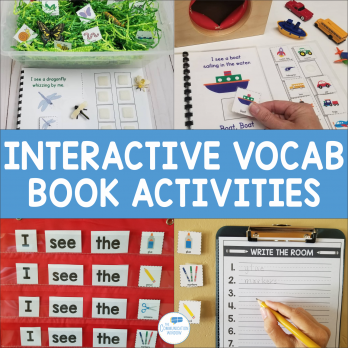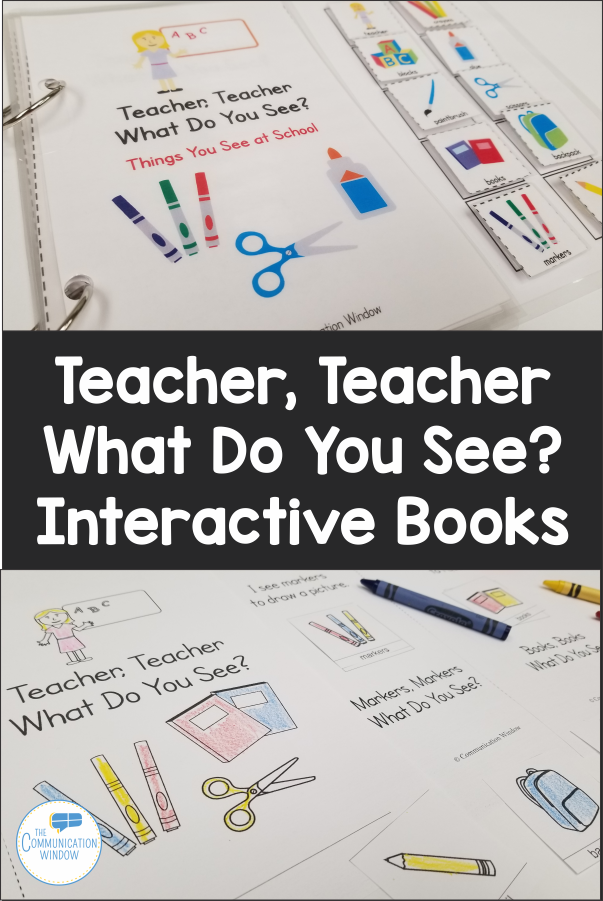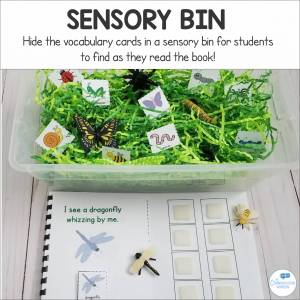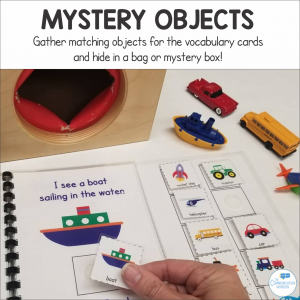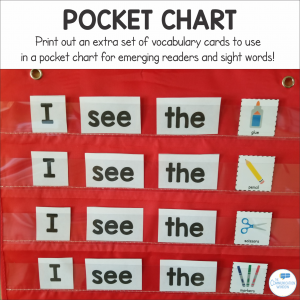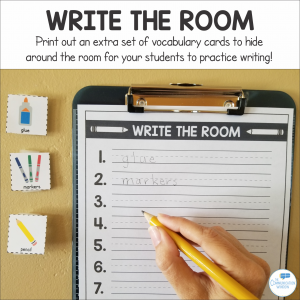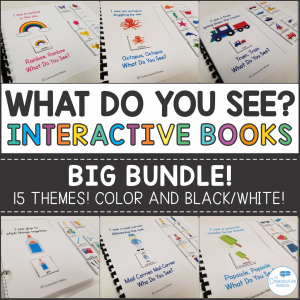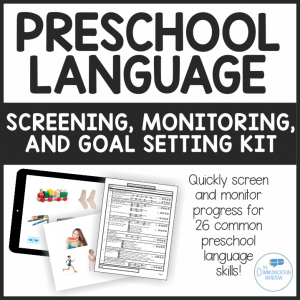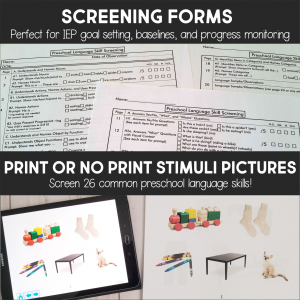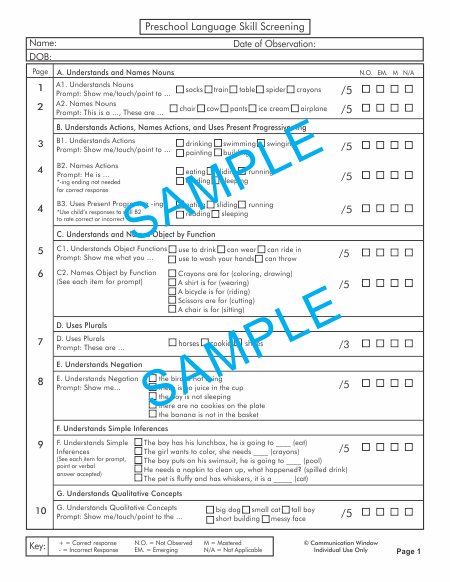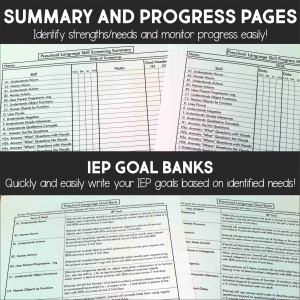Interactive Books are one of my absolute must-haves materials as a preschool speech pathologist. They are so engaging and versatile for working on a wide variety of preschool language skills. I have them for every preschool theme my classroom teachers use so that I can work on language skills using relevant vocabulary. I use my “What Do You See? Interactive Vocabulary Books” at the start of every month. They are the perfect push-in speech therapy activity. I read the full color version of the book during circle time and then my students make their own book to take home using the black and white version. See below to see an example of the “Teacher, Teacher, What Do You See?” Interactive Book that is all about school supply/back to school vocabulary.
These interactive books are so versatile that you can use them for so much more than circle time and small group activities. They are excellent for preschool classrooms, special education classrooms, early intervention, and English Language Learners. I often get asked for how the interactive books can be used so I wanted to share some ideas!
I love pairing the books with a sensory bin! You can see how I paired my Bug Theme Interactive “What Do You See?” Book with a fun sensory bug sensory bin by hiding the vocabulary cards in the grass with some plastic bugs.
Another fun activity is to gather up the matching objects that go with a vocabulary book and hide them in a bag or mystery box. As the student reads through the book he/she must reach and feel the objects and try to find the correct object that matches the page. You can see below how I used a mystery box paired with small vehicles to go with my Vehicle Theme “What Do You See?” Book.
I also love printing an extra set of the picture cards to use in a pocket chart for my emerging readers to work on sight words or expanding their language skills. In the example below, I made a pocket chart for practicing sight words with the school vocabulary from my School Theme “What Do You See” Interactive Book.
One way I like to extend the vocabulary into a writing activity is by hiding the vocabulary cards around the room to do a “write the room” activity. Students search around the room to find all the vocabulary cards and write each word on their recording sheet.
These are just a few of the ways that I use my Interactive Vocabulary Books! I’m sure there are many more that I haven’t even thought of. The “I see the” pocket chart cards and the Write the Room recording sheet are available as a free bonus file with my Bundle of “What Do You See?” Interactive Vocabulary Books on Teachers Pay Teachers. The bundle has books covering 15 popular themes! Click below to grab it!
